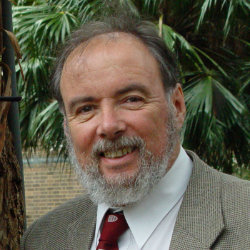Ian McAuley. Inequality in Australia.
April 6, 2014
A_Financial Review_article on March 24 claimed Inequality in Australia has not deteriorated over the last 25 years, according to Reserve Bank of Australia research that undermines claims the gap between rich and poor has worsened
The essence of the argument is that while, between 1993-94 and 2009-10, the distribution of income has become more unequal, we have all increased our consumption what we spend on food, transport, housing health care, recreation etc by the same amount. Therefore we arent becoming more unequal.
The argument is superficially credible, but its a sloppy piece of journalism.
For a start, the relevant Reserve Bank article, The Distribution of Household Spending in Australia in the latest_Bulletin_, is a carefully qualified study, and in relation to the change in consumption over the 16 years (not 25 years) to 2009-10 it concludes:
“The top 10 per cent of spenders have experienced slightly faster growth in real consumption than other households over recent decades, though the difference in growth is less pronounced than in the case of income.”
That is, even when consumption is used as a measure of wellbeing, there_has_been a rise in inequality. That is easily confirmed by comparing the 1993-94 and 2009-10 ABS_Household Expenditure Surveys_, which shows, in real (CPI-adjusted) terms, that the highest income fifth of households increased their consumption by 41 per cent, the middle fifth increased theirs by 32 percent, and the lowest fifth by only 19 per cent.
Second, as the RBA article points out, consumption is not a complete measure of wellbeing. One reason is that household expenditure statistics cover only what we spend from our own pockets, and do not include our enjoyment of publicly-provided services such as health care and education. If we spend more on these services because we believe, rightly or wrongly, that the quality or scope of publicly-provided services has deteriorated, then we can hardly be said to be better-off.
For example, between 1994 and 2010, the proportion of Australians with private health insurance rose from 36 per cent to 45 per cent, and between 1996 and 2010 the proportion of students in non-government schools increased from 29 per cent to 34 per cent. Household expenditure data shows that for the households in the middle income band 14 percent of their increase in expenditure was for education and health care, but for the highest income households health and education took only 11 per cent of their increased expenditure. The well-off already had private health insurance and children in private schools.
Third, while most economists agree that over the long term consumption is a reasonably good measure of material wellbeing, the compelling reality is that it has to be financed. Therefore if consumption and spending diverge for a period, it must be financed by borrowing or running down saving.
Robert Reich and other American economists point out that in the USA, while real incomes for all but the rich have stagnated or fallen for many years, people have maintained or improved their living standards by going further into debt. Australias situation is similar but a little more complex. Around 2002 we stopped running down our savings and started saving again. Our officially-measured savings rates in 1994 and 2010 were much the same, at around 10 percent of income. But those figures do not show the increasing tendency over that period to draw on increasing equity in our houses through financial innovations such as mortgage re-draw facilities. Our house price boom allowed us to use our houses as ATMs, a phenomenon eloquently described by a young man caught by a roving microphone on the evening of Howard’s 2004 election victory, who said. Of course I voted for Johnny Howard. When he was elected my house was worth only $200 000; its now worth $500 000. Why wouldnt I vote for someone whos made me $300 000 richer?
That debt, financed by illusory wealth, eventually catches up with us. Indeed, in recent years (since 2009-10) it has been manifest in widespread complaints about the cost-of-living. Work by Tim Soutphommasane of Per-Capita and research I have done for The Centre for Policy Development shows that although incomes have been rising faster than prices, Australians generally believe it is getting harder to make ends meet. The most compelling explanation for this apparently contradictory finding is that we are at last finding that we have been living beyond our means.
